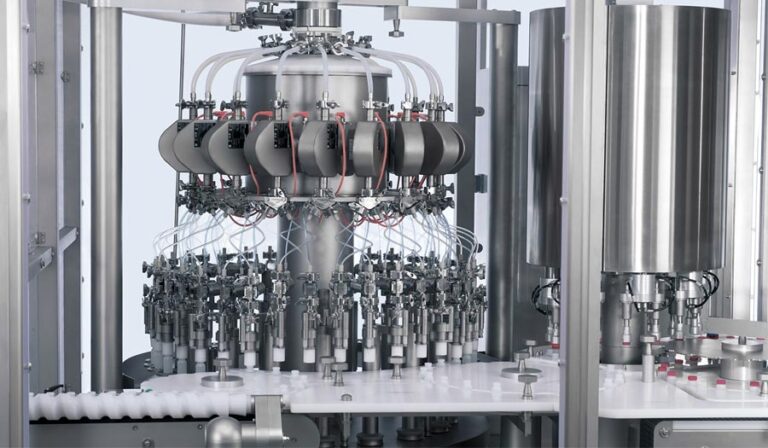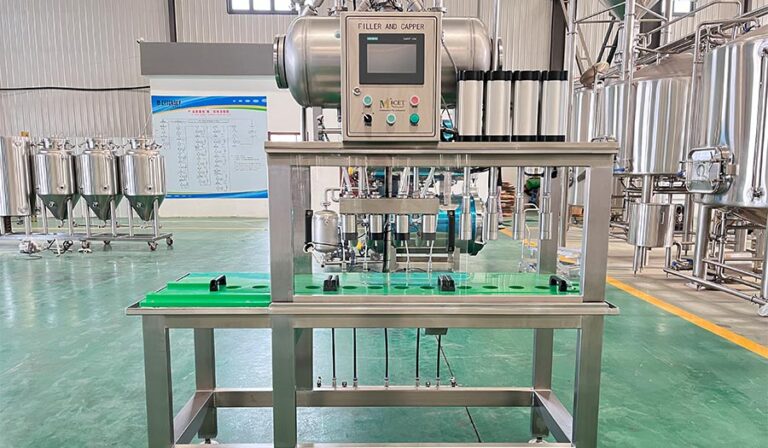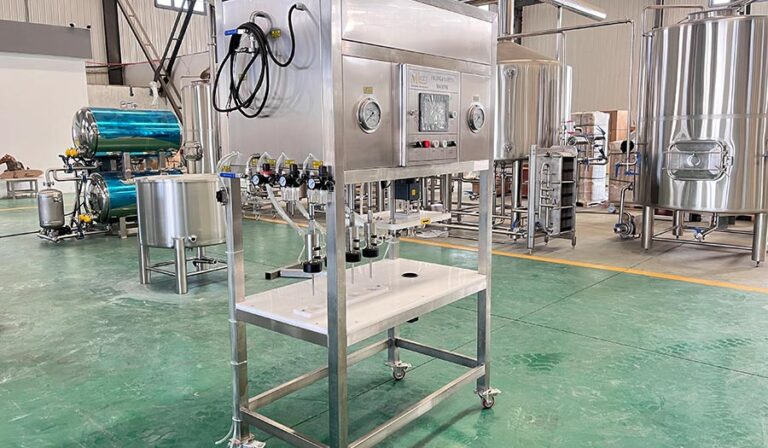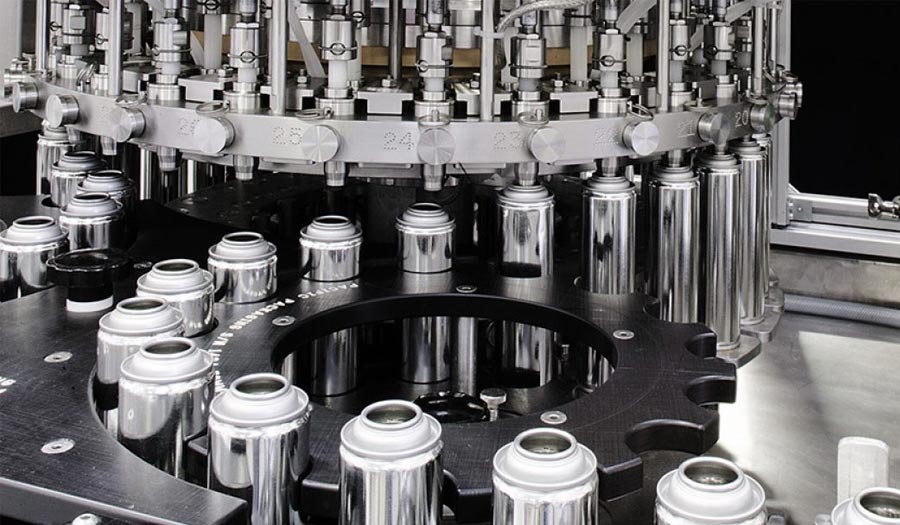In the beer brewing industry, beer-filling equipment is an indispensable production line. After a series of delicate process treatments, it is finally bottled and becomes a vital fine wine on our table. This guide will explore the filling production process in beer production in detail so that beginners can have a good understanding of this complex and cumbersome process.
What is beer-filling equipment?
Beer-filling equipment is mechanical and automated equipment that fills beer or other beverages into containers such as bottles, cans, or barrels. These devices are usually used in the later stages of the beer production line. Their purpose is to efficiently and hygienically fill beer into containers while ensuring the quality and safety of the product and the overall cost-effectiveness of the operation.
Tipi di macchine di riempimento:
- Bottle-filling machine: used to fill beer into glass bottles or plastic bottles.
- Can filling machine: specially used to fill beer into aluminum cans.
- Barrel filling machine: used to fill beer into large barrels or small barrels.

The role of beer-filling equipment
Maintaining beer freshness
The freshness of beer is a delicate balance that is affected by oxygen exposure, temperature fluctuations, and carbonation preservation. Beer-filling machines are designed with features to meet these challenges, ensuring that each can or bottle is filled under optimal conditions. By minimizing air contact during the filling process, these machines prevent oxidation, a key factor in maintaining beer freshness and preventing flavor degradation.
Preserving taste
Taste is the soul of any beer, and beer-filling machinery plays a vital role in preserving this essence. Automatic beer filling machines, in particular, use advanced technology to ensure that the filling amount is consistent and accurate. This precision prevents overfilling and underfilling.
Sigillatura
After the beer is filled, the beer bottle or can needs to be sealed immediately to prevent air ingress and bacterial contamination. The sealing machine tightly fixes the bottle cap or aluminum cap on the bottle mouth through high-temperature heating or mechanical compression. At the same time, the production line is also equipped with an advanced detection system to conduct strict inspections on each bottle of beer, including appearance inspection, liquid level inspection, air pressure inspection, etc., to ensure that each bottle of beer meets quality standards and hygiene requirements.
What is the beer-filling production process?
It all starts with clear sake. After a series of complex processes such as mash, fermentation, and maturation, beer finally becomes the beer we have been looking forward to for a long time. These precious liquids are stored in special beer storage tanks, waiting to be sent to the beer-filling machine production line.
Conveying
On the beer-filling machine production line, the conveying system plays a vital role. It is like an invisible bond, accurately and efficiently transferring sake from the storage tank to the entrance of the filling machine. This process requires extremely high precision and stability to ensure that every drop of beer can enter the filling link accurately.
Riempimento
When sake enters the filling equipment, a fusion of technology and art begins. The filling machine is equipped with advanced control systems and sophisticated mechanical structures, which work together to inject sake into each bottle or can at a constant speed and volume. During this process, the filling line automatically adjusts the liquid level, controls the generation of bubbles, and detects the filling quality to ensure that every bottle of beer meets perfect standards.

Sealing and testing
After beer filling, beer bottles or beer cans need to be sealed immediately to prevent air from entering and bacterial contamination. The sealing machine fixes the bottle cap or aluminum cap tightly on the bottle mouth through high-temperature heating or mechanical compression. At the same time, the production line is also equipped with an advanced detection system to conduct strict inspections on each bottle of beer, including appearance inspection, liquid level inspection, air pressure inspection, etc., to ensure that each bottle of beer meets quality standards and hygiene requirements.
Packaging and delivery
After filling, sealing, testing, and other processes, qualified beer will be sent to the packaging area for boxing, packaging, and palletizing. These packaged beers will be shipped to markets and supermarkets across the country for consumers to purchase. Throughout the process, the beer-filling equipment production line always maintains efficient, stable, and reliable performance, providing a strong guarantee for the production and sales of beer.
Benefits of using filling equipment
- Upgradeable: One of the most significant advantages of automatic filling equipment is its upgradeability. As the company grows, the integration will get better. The number of filling heads depends on the model. You can upgrade.
- Easy to operate: The automatic filling machine is also easy to operate, which makes it more reliable. It is easier to use than other bottling machines. You can operate the machine without any learning or difficulty. Some machines also include touch screens for easier navigation when selecting operations.
- Improving efficiency: Some semi-automatic filling machines require manual operation, while there are also fully automatic filling machines that reduce manual operations, save packaging time, and improve production efficiency.
- Easier work: If filling by hand, uneven quantities may occur, depending on your skills and experience. The use of filling machines can achieve quantitative packaging, stable quality, and efficient operation.
How to choose suitable beer-filling equipment?
- Production scale: First determine your production scale, including filling volume per hour, day, or month. This will help you choose the right device model and specifications.
- Filling type: Different filling equipment is suitable for different containers, such as bottles, cans, or barrels. After confirming your main product type, select the corresponding filling equipment.
- Filling technology: gravity filling, vacuum filling, pressure filling, etc. Understand the pros and cons of different filling techniques so you can choose the type of beer that’s best for you. For beers that need to be protected from oxidation, vacuum or pressure-filling techniques may be more appropriate.
- Automation level: Choose the appropriate automation level based on budget and production needs. Although the initial investment for fully automatic equipment is high, it can significantly improve efficiency and reduce labor costs in the long run.
- Equipment material and hygiene standards: Choose corrosion-resistant and easy-to-clean materials, such as stainless steel, to ensure compliance with food safety standards. Equipment should be easy to disassemble and clean to meet hygiene requirements and avoid cross-contamination.
- Adjustment and maintenance*: Consider the adjustability of filling equipment to adapt to different product specifications and bottle types. Choose equipment with easy maintenance and easy access to spare parts to reduce downtime and lower maintenance costs.
- Budget and investment: Evaluate the purchase cost, operating cost, and benefits of equipment to ensure that you make the best choice within the budget.
- Supplier reputation and support: Choose suppliers with well-known brands and good after-sales services to ensure timely technical support and services during equipment operation.
- Customer Feedback and Evaluation: View feedback from other brewery customers, as well as actual use cases of the equipment, to get a true assessment of the equipment’s performance.

Installation and Maintenance of Beer Filling Equipment
- Installation: Installation can vary depending on the type and complexity of the machine. Large automatic machines often require professional installation, while manual systems are easier to set up. It is important to work with your supplier to ensure proper setup and training.
- Training: Operating beer-filling equipment may be simple for manual systems, but automated machines often require operator training. Efficient operation ensures faster production and minimal errors.
- Maintenance: Regular maintenance is key to avoiding breakdowns. Most manufacturers offer maintenance packages, so routine cleaning, lubrication, and parts replacement must be performed by the equipment manual. Maintaining hygiene is also essential to prevent contamination.
FAQ
What is beer-filling equipment?
Beer-filling equipment is machinery used to efficiently and hygienically fill beer into a variety of containers such as bottles, cans, or kegs. It can be manual, semi-automatic, or fully automatic, depending on the scale of production and needs.
How do you keep filling equipment sanitary?
Clean regularly with approved disinfectants, follow the manufacturer’s maintenance guidelines, and ensure the equipment is properly sealed to prevent contamination.
What is counter-pressure filling?
Counter-pressure filling is a method of maintaining pressure inside a bottle or can to prevent beer from foaming, which helps maintain carbonation.
How long does filling equipment last?
The life of filling equipment generally depends on the frequency of use, maintenance, and material quality. Good quality stainless steel equipment can last for many years with normal use and maintenance.




